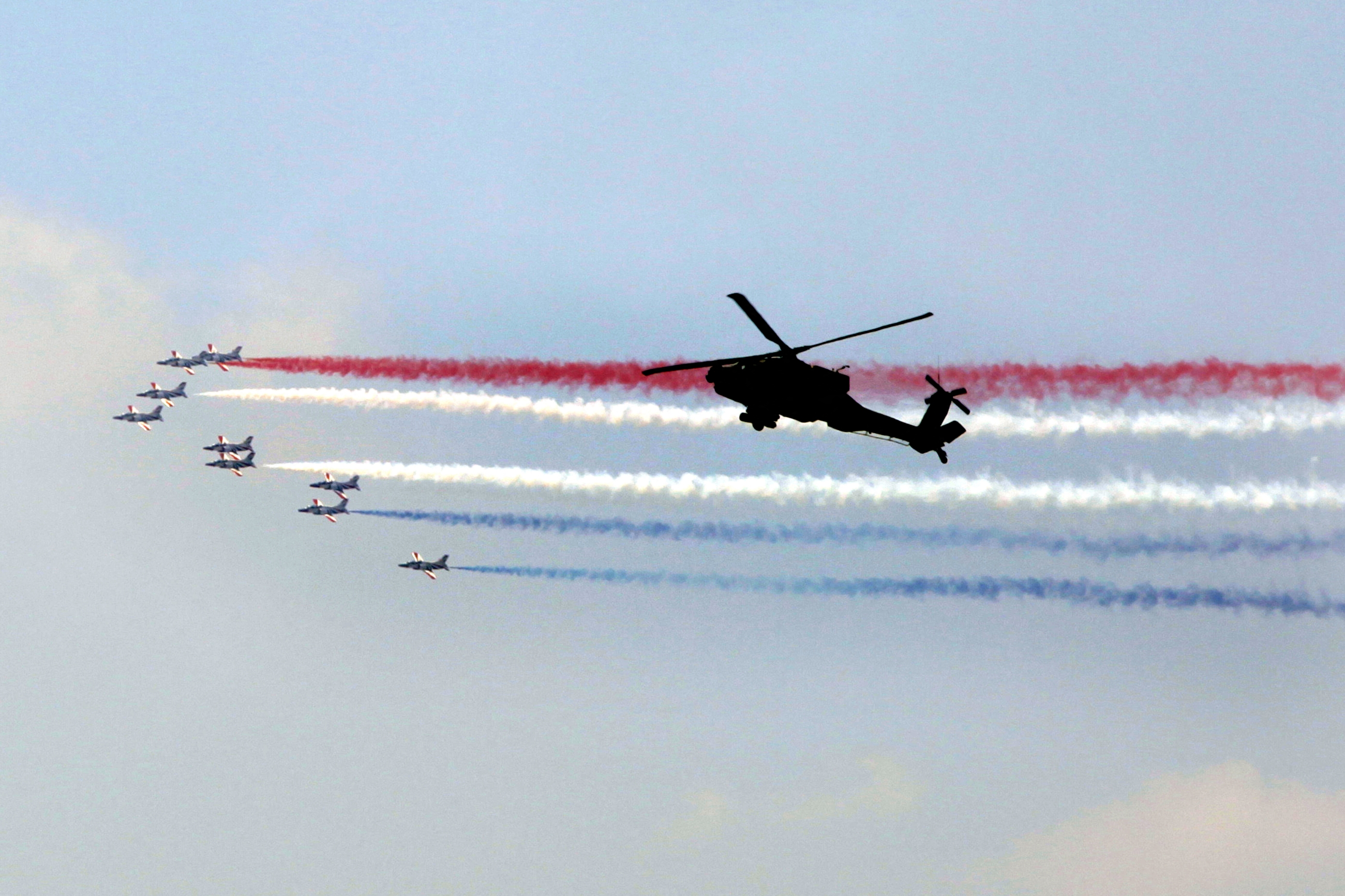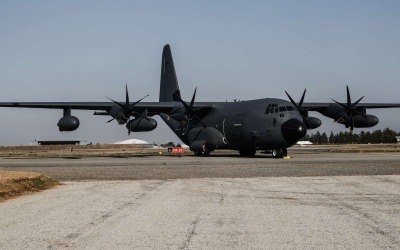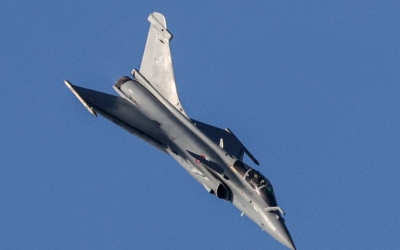Egypt has spent big on diversifying its air force, but to what end?

Egypt appears close to finalising a $3bn deal with Italy for 24 Eurofighter Typhoon fighter jets, its first order for this model of aircraft. The deal is the latest in a series of fighter acquisitions Cairo has made from several countries over the past eight years. As a result, the Egyptian Air Force (EAF) today has a diverse fleet of jets.
After the signing of the Egypt-Israel peace treaty in 1979, Cairo procured the vast majority of its fighter planes from the United States, which replaced the Soviet Union as its leading arms supplier. Consequently, Egypt acquired the fourth largest F-16 fleet in the world.
Fast forward to 2014 and Abdel Fattah el-Sisi is Egypt's president. He sought to diversify the Egyptian military, including the air force, and make it less dependent on Washington. As part of this endeavour, Cairo became the first foreign buyer of France's Dassault Rafale multirole fighter jet in 2015 as part of a landmark multi-billion dollar arms deal.
Acquiring French fighters in addition to American ones is neither rare nor unique. Qatar, for example, is buying advanced F-15s from the US, Rafales from France, and Eurofighters from the United Kingdom.
But Sisi was not content with just the French fighters to diversify the EAF’s predominantly American arsenal. He went a step further and initiated Egypt's most significant purchase of Russian weaponry since the 1970s, including 46 MiG-29M/M2 fighters for the EAF.
In 2018, he pushed ahead with an order for the more advanced Russian Su-35 Flanker-E in a $2bn deal - despite firm US warnings that this could trigger sanctions against Cairo under the Countering America's Adversaries Through Sanctions Act (CAATSA).
Integration issues
Of course, integrating Western and Russian military aircraft into one cohesive air force is not straightforward. One analysis even suggested that the EAF's Russian jets will likely become little more than "an air force within an air force" due to interoperability issues.
"Egypt has had significant difficulties integrating its Russian-supplied MiG-29 and Su-35 aircraft into its largely Western-supplied networks and command and control systems," Justin Bronk, senior research fellow for airpower and technology in the Military Sciences Team at the Royal United Services Institute (RUSI), told Middle East Eye.
Meanwhile, the Rafales and F-16s "are designed according to Nato STANAG (Standardization Agreement) standards, and so are much more easily integrated and interoperable from a weapons perspective".
Tom Cooper, a military aviation expert, and a prolific author, pointed out that Egypt had its own identification, friend or foe (IFF) software that works for its American, French, and Russian jets.
The EAF has also used its MiG-29s as tankers for buddy-buddy refuelling its Rafales since the in-flight refueling (IFR) systems of those two aircraft are compatible.
On the other hand, the Russian jets are incompatible with the types of missiles and bombs used by the EAF F-16s and Rafales. And while EAF F-16s and Rafales can use many of the same weapons, Cooper noted that those two Western jets were built for "entirely different purposes".
"F-16s are mostly used for air defence, Rafales as fighter-bombers/strikers," he said.
Regarding their compatibility, Cooper explained that while it's "doable" for EAF Rafales to guide air-to-air missiles fired by F-16s, "nothing of that kind has happened yet as far as I know".
"There is no point in them trying to do that, because Egyptian F-16s are armed only with obsolete air-to-air missiles," he said.
Severe shortcomings
Sebastien Roblin, a defence journalist who has written hundreds of articles on military aviation, summed up the EAF as "inefficient and weirdly constructed".
While the MiG-29s Egypt acquired are among the most capable of that type, they lack the active electronically scanned array (AESA) radar found in many modern Western jets, he added. Furthermore, the beyond-visual-range air-to-air missiles (BVRAAMs) they carry are inferior to their US and European counterparts.
For decades, the US has refused to sell Egypt AIM-120 BVRAAMs, forcing it to rely on inferior missiles. The US and Israel also pressured France not to sell its Meteor BVRAAMs. That was one reason Cairo opted for Russian fighters.
That may all change, now that the US has expressed its openness to potentially selling Egypt F-15s for the first time earlier this year. Washington also appears willing to offer Cairo incentives to stop importing arms from Russia in favour of buying more American hardware.
Egypt may be happy to oblige since it is reportedly dissatisfied with the Su-35s Russia is building for it. Those Russian jets only have passive electronically scanned array (PESA) rather than AESA radars, the latter of which is much more advanced. To add insult to injury, when the EAF reportedly tested the Su-35's Irbis-E radar against the Rafale's electronic countermeasure system, the Russian radar was easily overpowered.
Cooper also pointed out that the EAF MiG-29s still haven't been upgraded to the MiG-35 standard per the original contract with Moscow.
Given these severe shortcomings, Cairo may welcome a deal for F-15s from Washington, especially if it comes with the AIM-120 cherry on top.
No major advantages
"I'd ascribe Egypt's tendency to collect jets from everywhere as reflecting a political strategy - one you also see in nearby wealthy Middle Eastern countries - aimed at building relationships with various influencers at the expense of logistical efficiency," Roblin said.
'It's only making the logistics and maintenance more complex'
- Tom Cooper, aviation expert
The UAE withdrew its bid for the F-35 in late 2021 over disagreements with US preconditions. It did not turn to Moscow for alternatives. Instead, it ordered 80 Dassault Rafale jets from France.
Turkey, a Nato member, was banned from buying F-35s in 2019 after it took delivery of advanced Russian-built S-400 air defence missile systems. While it flirted with buying advanced Russian Sukhoi jets, it never did.
Ankara is currently negotiating with the US to buy 40 new F-16s and upgrade its existing arsenal. Even if that order falls through, Ankara is much more likely to order European jets, probably Eurofighters, rather than Russian fighters.
"Having such a diverse fleet reduces Egypt's geopolitical dependence on the goodwill of any single partner nation, but also makes its supply chain, spares management and operational integration challenges much harder than they would otherwise be," Bronk said.
Cooper believes there's no major advantage to the strategy.
"On the contrary: it's only making the logistics and maintenance more complex," he said. "The only advantage might be that some of Rafale's capabilities are not known to Israel, and some of its weapons might be harder for the Israelis to counter - while everything about Egyptian F-16s is known to Israel.
"That's about all that matters to the Egyptians."
Middle East Eye propose une couverture et une analyse indépendantes et incomparables du Moyen-Orient, de l’Afrique du Nord et d’autres régions du monde. Pour en savoir plus sur la reprise de ce contenu et les frais qui s’appliquent, veuillez remplir ce formulaire [en anglais]. Pour en savoir plus sur MEE, cliquez ici [en anglais].



